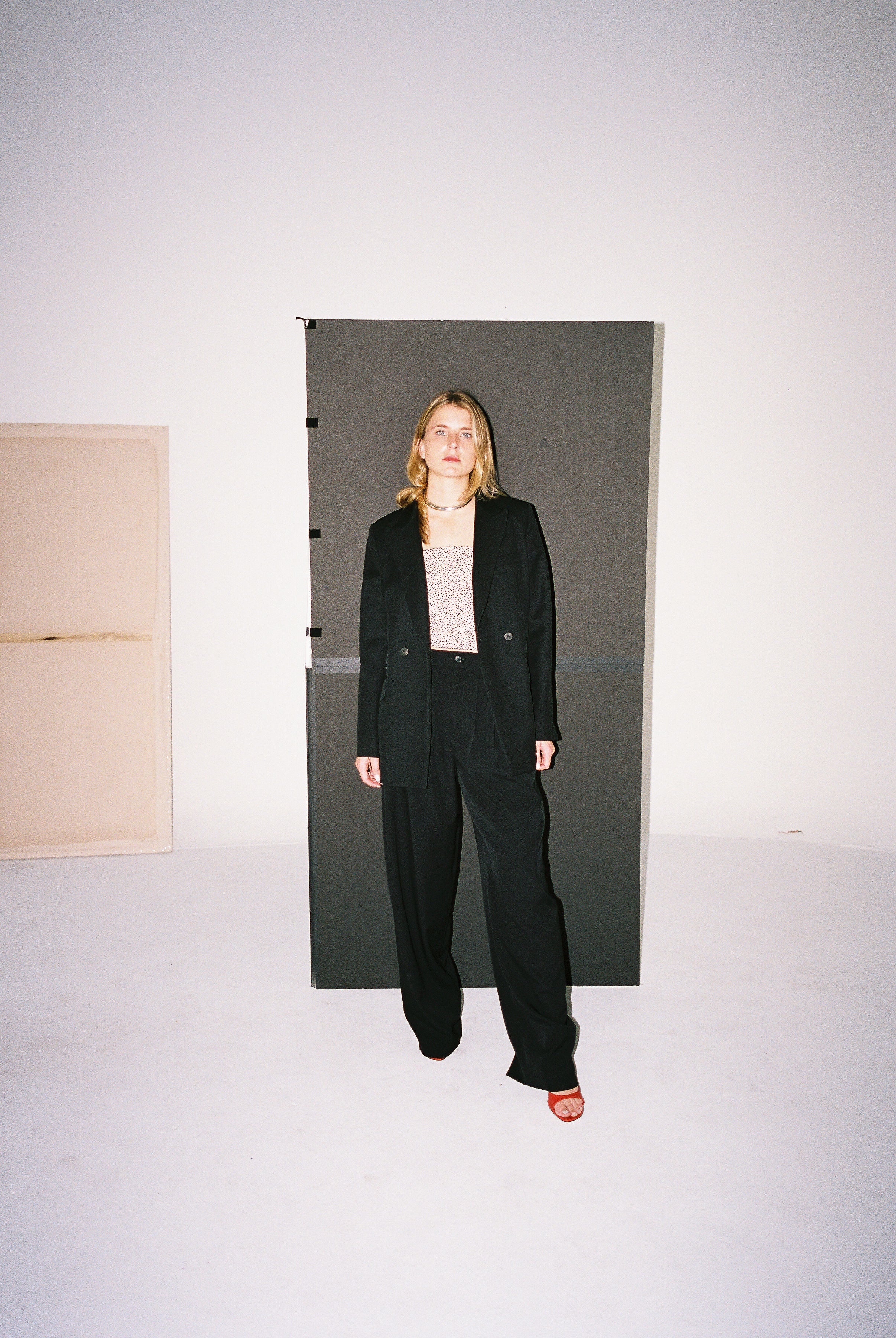
CAROLINE PINNEY
Caroline Pinney is a contemporary figurative artist whose work delves into intimacy and human relationships. Since receiving her BFA in 2016, she has lived in Nashville, Richmond, and Austin, with each city’s unique culture influencing her art. Her paintings balance gestural and controlled techniques, utilizing materials like acrylic,
oil, charcoal, and unconventional elements such as coffee staining. Pinney’s distinctive color palette and textures reflect her environment and individuality. Her art, especially her portrayal of women, captures vibrant social interactions and contemplative moments, inviting universal interpretation while showcasing her deep care for people.

How did your journey as a contemporary figurative artist begin, and what draws you to explore themes of intimacy and human relationships in your work?
It has always felt more natural to me to communicate visually and physically rather than verbally, so I’d say my journey as an artist began at a young age. The human figure, especially the female figure, is something I correlate heavily with communication. In college, I was prone to practicing figure drawing more literally, but craved the fluidity and freedom that comes with abstract expression. It wasn’t until a few years ago that I began to marry the two and found a sweet spot in terms of how I wanted to tell a visual story. I’m very interested in human connection and relationships and what it means to be a woman. My artistic practice fosters a deeper understanding of it all.
Could you discuss the influence that living in Nashville, Richmond, and now Austin has had on your artistic development, particularly in terms of landscape and cultural scene?
Aside from a vibrant art and music scene, something that Nashville, Richmond, and Austin all have in common, is robust scenery and an abundance of character. I’m drawn to places with cultural character that’s most palpable within old architecture, community, and well-loved landscapes. I find myself wanting to honor parts of each of these cities in my work in a myriad of ways.
SHOP VOLUME 6 - TO READ MORE
